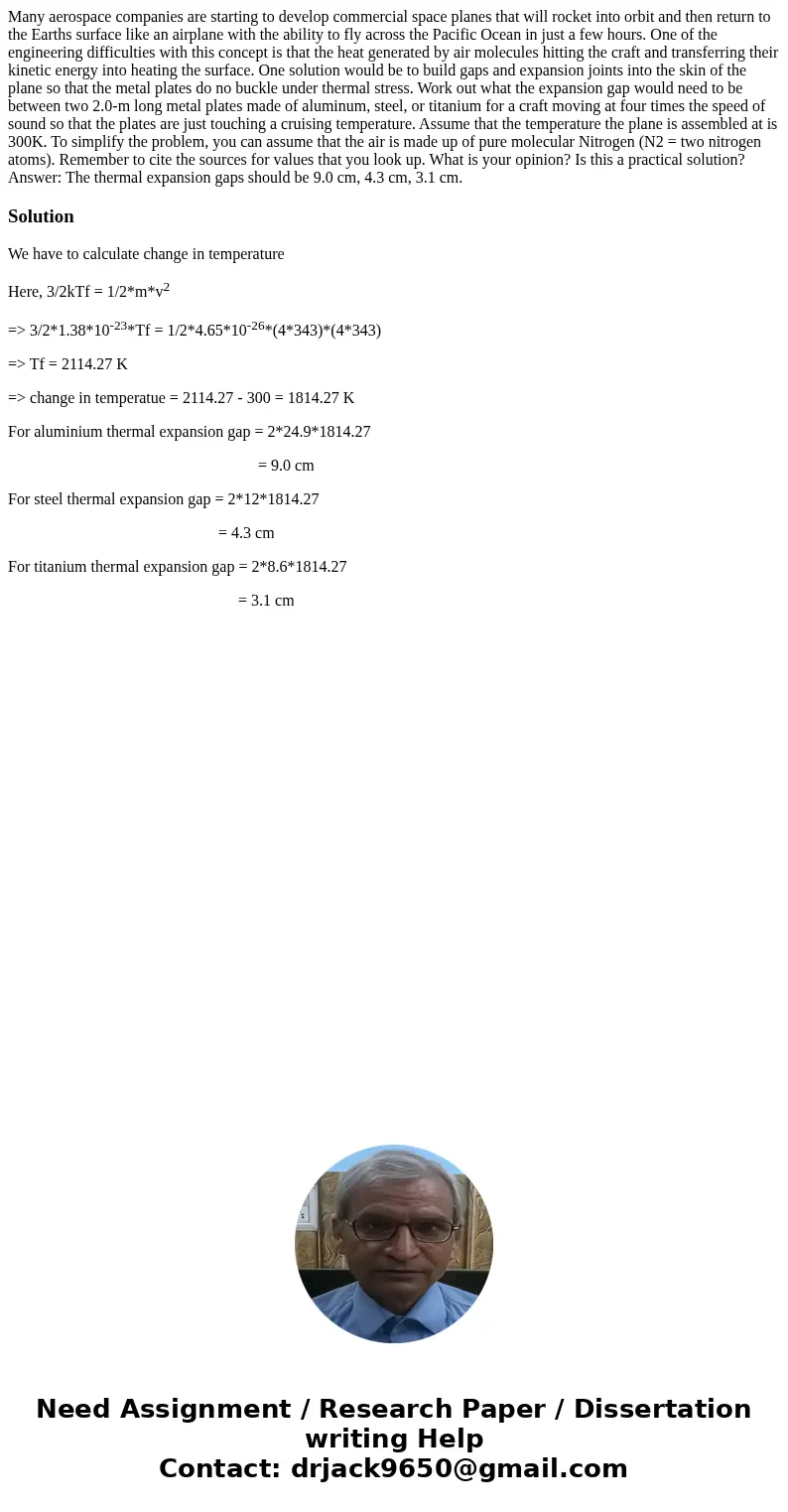Many aerospace companies are starting to develop commercial
Many aerospace companies are starting to develop commercial space planes that will rocket into orbit and then return to the Earths surface like an airplane with the ability to fly across the Pacific Ocean in just a few hours. One of the engineering difficulties with this concept is that the heat generated by air molecules hitting the craft and transferring their kinetic energy into heating the surface. One solution would be to build gaps and expansion joints into the skin of the plane so that the metal plates do no buckle under thermal stress. Work out what the expansion gap would need to be between two 2.0-m long metal plates made of aluminum, steel, or titanium for a craft moving at four times the speed of sound so that the plates are just touching a cruising temperature. Assume that the temperature the plane is assembled at is 300K. To simplify the problem, you can assume that the air is made up of pure molecular Nitrogen (N2 = two nitrogen atoms). Remember to cite the sources for values that you look up. What is your opinion? Is this a practical solution? Answer: The thermal expansion gaps should be 9.0 cm, 4.3 cm, 3.1 cm.
Solution
We have to calculate change in temperature
Here, 3/2kTf = 1/2*m*v2
=> 3/2*1.38*10-23*Tf = 1/2*4.65*10-26*(4*343)*(4*343)
=> Tf = 2114.27 K
=> change in temperatue = 2114.27 - 300 = 1814.27 K
For aluminium thermal expansion gap = 2*24.9*1814.27
= 9.0 cm
For steel thermal expansion gap = 2*12*1814.27
= 4.3 cm
For titanium thermal expansion gap = 2*8.6*1814.27
= 3.1 cm

 Homework Sourse
Homework Sourse